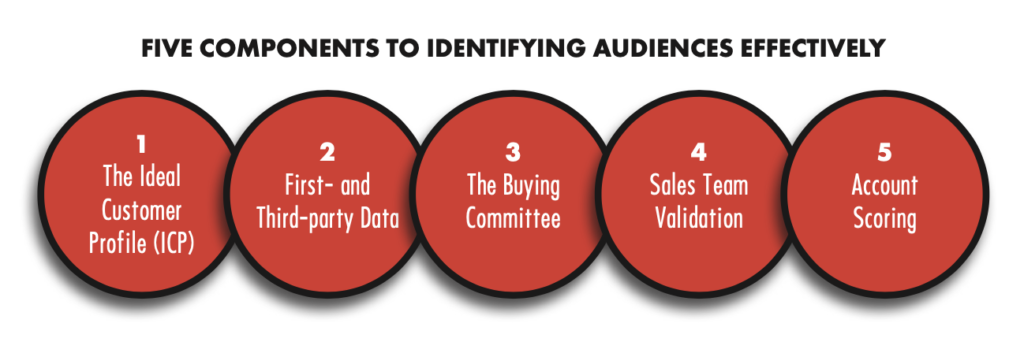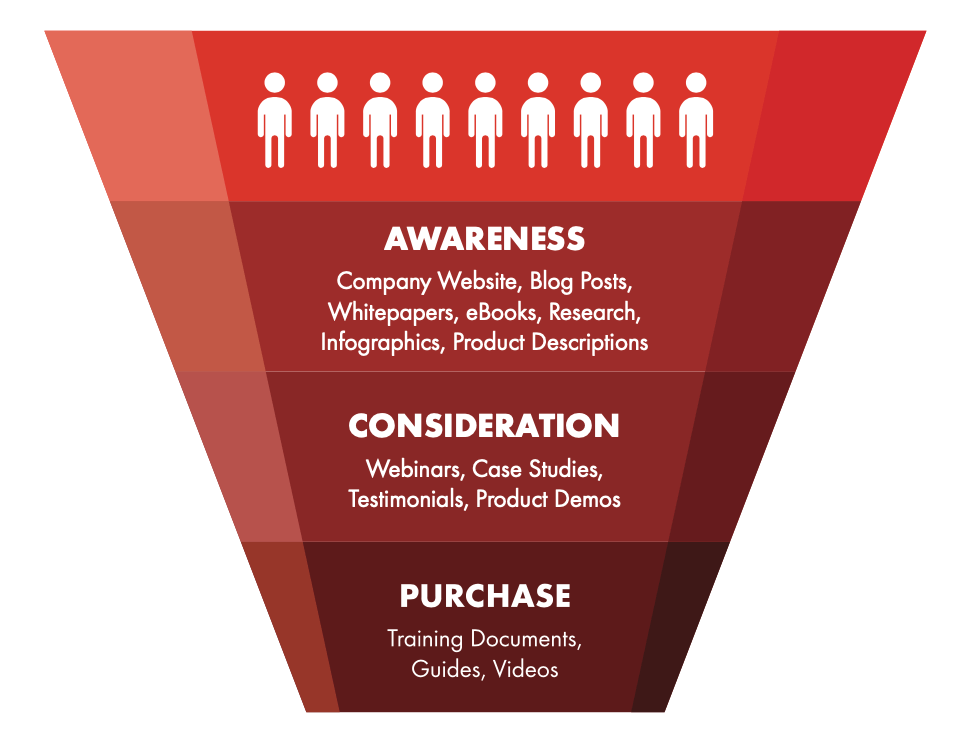Executing Account-Based Marketing Strategies in the Digital Marketplace
October 20, 2020
At the end of the year when “Trends of 2020” reports are published, it is without a doubt we will be reading about the transition to all things digital. While it sounds simple enough, for many businesses it has been an adjustment that requires many considerations and thoughtful decisions. For integrated marketing agencies, like Draper DNA, it has been important to learn how to identify audiences effectively and execute account-based marketing in the digital marketplace successfully.
What we’ve learned is that with the right information and appropriate tools, account-based marketing can be pretty effective for B2B marketers looking to gain quality leads, loyal customers, and ultimately grow their business. How? We’ve taken a deep dive into many layers of research to find the ultimate playbook, with the help of the Interactive Advertising Bureau (iab), to jump start and optimize this approach effectively.
What is Account-Based Marketing
First and foremost, what, exactly, is account-based marketing? According to iab, it can be a complex strategy, but at its core, it is a strategic approach where sales and marketing are aligned and focus their time and resources on an agreed upon set of target accounts with which they want to do business. What Draper DNA would call, “back to basics” which is one of our primary ways of doing business.
The benefits of going back to basics, and executing account-based marketing extend far. Some include:
- A higher return on investment (ROI): In their “The State of AMB 2019” study, SiriusDecisions found that 89% of organizations able to report on account-based marketing ROI indicated a higher ROI compared to a control group that did not receive support from an account-based marketing program. 30% of the organizations found ROI to be higher by at least 21%.
- Increased share of wallet: 91% of B2B marketers activating account-based marketing campaigns say deal size is larger for these accounts and 25% of them say it is over 50% larger, according to the SiriusDecisions report.
- Higher win rates: 86% of B2B organizations said account-based marketing improves win rates.
- Revenue growth: After just one year of implementing account-based marketing, companies have seen a 10% increase in revenue, while 19% have seen over 30% increase in revenue.
- Client retention: 84% of B2B marketers claim significant benefits to retaining and expanding existing client relationships.
- Enhanced customer lifetime value: 80% of B2B organizations assure account-based marketing improves a customer’s lifetime value.
- Stronger alignment between sales and marketing: 67% of businesses find greater success in closing deals when sales and marketing are aligned.
What Does This Mean To Me?
So, what does this mean, you might ask? How can I be successful in implementing this during such a changing marketplace?
With so many benefits outlined above, how do we see those kinds of numbers in our own approach? Account-Based Marketing is about genuinely understanding each identified account to communicate custom messages with the goal of moving buyer committees through the customer’s journey. Some keys to success to consider could be:
- Aligning and orchestrating your fully integrated team to ensure everyone is on the same page, with the same measurable objectives in mind.
- Using account-based marketing as a complementary strategy as opposed to an “all-in” approach.
- Understanding that B2B sales cycles can take some time to see initial results, patience is not only a virtue, it’s key to the success of an account-based approach.
- Define the complete account-based marketing strategy upfront. All parties must understand what is trying to be accomplished, agree on the goals and objectives and know how they should be measured. Clarity on these three fundamentals will lead to success.
- Identify optimal accounts that you are certain have the potential to drive results.
- Customization is key. Each account will have different problems, so each account will require different solutions. Each should be outlined and agreed upon by all team members before defining approach.
- Measurement will forever be what is most important to our B2B clients, and in the case of account-based marketing, measurement needs to be considered differently. This approach will vary from client to client, so it is imperative to set goals early on, before deploying any kind of account-based marketing campaign.
Who is ABM For?
Great. Now, who the heck wants to be a part of this? It’s imperative to align on the objectives of an account-based marketing approach when targeting prospective clients. Are they most interested in brand growth? Sales? Higher close rates? Knowing this will define who the audience needs to be. How do you identify these audiences correctly? iab suggests the following approach:

First, you will need to define the ideal customer profile. What type of company would reap the most benefit from what your account-based marketing team has to offer? iab proposes conducting both a closed-win and closed-loss win analysis to aid in decision making. This invaluable information can be used to validate propensity models, that predict behavior and can identify accounts to target.
Next, it is important to leverage a combination of available first and third-party data to ensure audience accuracy. This should be done in tandem with developing the ideal customer profile. To have the most effective approach it is important to review deterministic and probabilistic data so you are targeting the right set of prospects. Quality data provides the required insights to choose the right target accounts, identify the buying committee and reach more contacts to ultimately win more deals. It is key to assess first-party data and then look to third-party data for scale. First-party data is usually the most useful and valuable, but third-party data is critical when trying to reach a new audience.
Once the accounts have been narrowed down, the next step is to understand who is in the buying committee for each of these accounts. In the B2B buying process, decisions are very rarely made by a single decision-maker. Rather, the decision is influenced by several members from varying functions and seniorities of the organization. Defining who in your organization will take the lead for who you are targeting is a critical component to success. It’s important to note that a feedback loop is essential between sales and marketing. Once marketing has identified an audience, it should be shared with the sales team for validation and to secure their buy-in before moving forward.
Next Steps
Now that you have identified your target accounts, aligned internally and are committed to proceeding, you’re ready to plan the account-based management tactics. Time, resources and budget will need to be gauged. Once you’ve established those three items, you can map goals accordingly. As with every marketing strategy, content, activations and tools are key elements. Specific to this type of marketing program, each can be its own effective pillar.
Content should engage with relevance, provide solutions, be compelling, align to the role of the individual plays and map to the specific place in the buyer’s journey. It should inspire, surprise and delight individuals to take the next step and decide. At the beginning, content should focus on branding or general topics potential customers would find interesting. As consumers move from awareness to purchase, content becomes more specific for sales to leverage once the lead is submitted.

As marketing and sales alignment is critical to successful account-based marketing, it is also essential to identify appropriate content the sales team can leverage when communicating with leads. They should be provided with content to use as talking points as well as content to give leads to progress them down the buyer’s journey. Account based marketing stands out as a strategy because of the level of customization and personalization of the content and message that enhance its ability to drive action from the leads.
Customization is key and sales and marketing must work in conjunction to understand the objective each specific account is trying to achieve to assure tailored messages are being communication correctly. Information will need to be relayed differently to each of these individuals.
Phew, we have made it and are ready for activation. Once content has been established, mapped and created to touch along the buyer’s journey, account-based marketing tactics are ready to be activated.
The first thing to consider is email marketing. Compared to other activations, email marketing is 1:1 communication where you can have an account-specific conversation directly with the individuals trying to be reached. This is an exemplary opportunity for personalization, where emails can and should be heavily customized. When leveraging email marketing for account-based management, it is suggested you consider:
- Ensuring the message aligns to the role of the individual
- Use sequential messaging to move along the buyer’s journey
- Do not over deliver or span target accounts
- Decide how you’d like to measure success from this email deployment
We wouldn’t be doing our due diligence without reminding you of the importance of social media marketing. B2B marketers should leverage their networks (always, but also) when setting up account-based management campaigns. Social media provides a key platform to have personalized conversations with target accounts and engage the buying committee at the same time.
In tandem with social media marketing, mobile plays a large role in successful campaigns. Mobile can be used for optimization and scale throughout the account-based marketing planning journey. Mobile can have its challenges, but is also growing rapidly in the B2B space. It is essential to reach the buying committee where they spend most of their time and optimize creative and personalization accordingly. If the buying committee is not being targeted via mobile, it is a lost opportunity.
A Complement
To tie a bow on each campaign, it is important to remember that account-based marketing can be used as a complementary strategy with standard B2B marketing campaigns. Consider using programmatic as a guide to collecting data that can enhance other channels.
Account-based marketing is a strategic approach where sales and marketing align to focus time and resources on an agreed upon set of target accounts they’re interested in pursuing for business opportunities. It is a complex strategy that requires a lot of attention to detail, teamwork and measurable objectives.
Interested in discussing this approach in greater detail? Email shawn@draperdna.com





